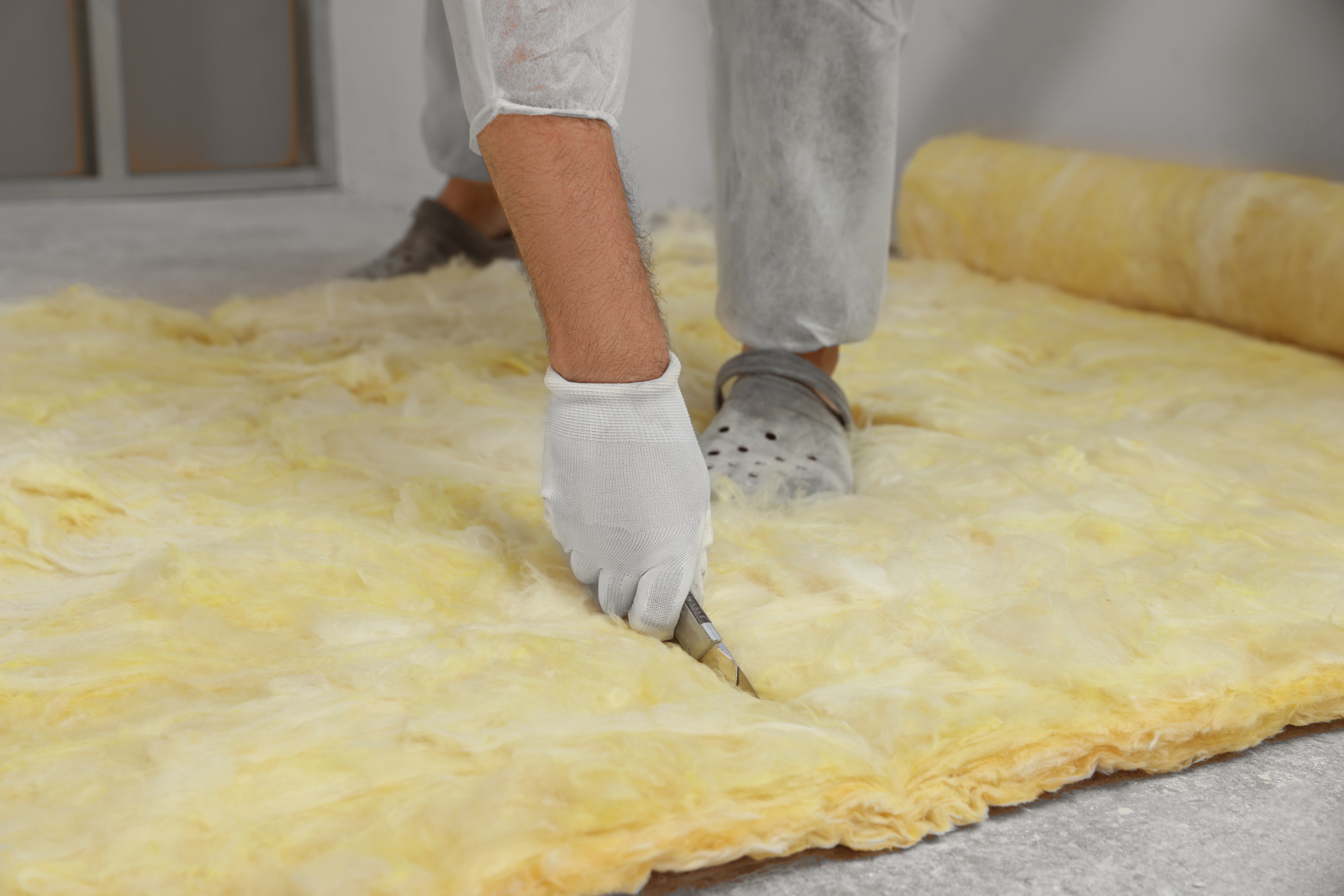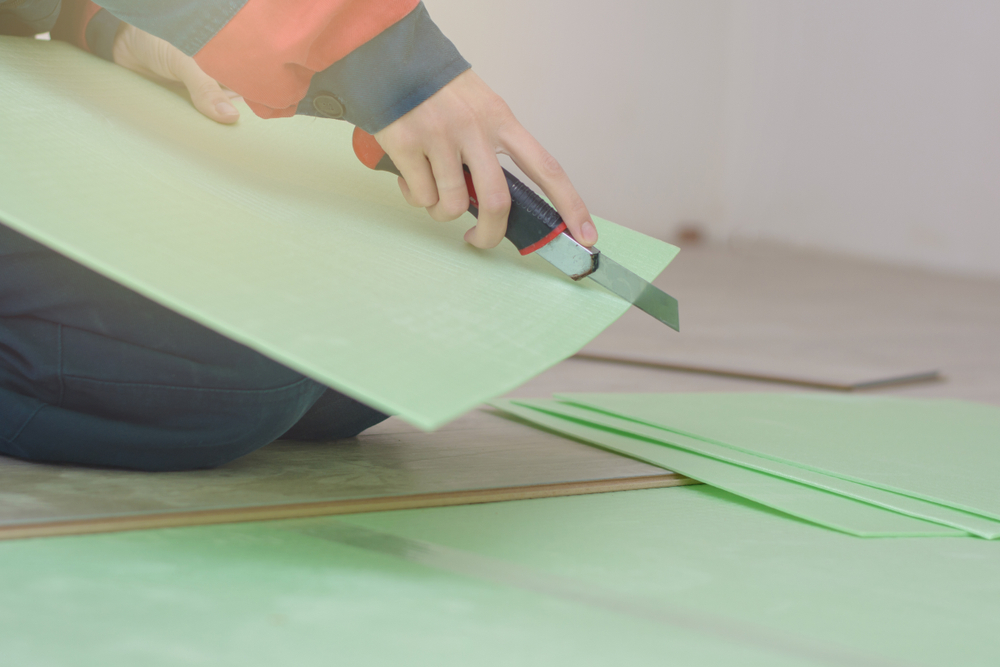Soundproof Insulation
(35 Products)Calm the chaos and make your house a home with soundproof insulation. Sound insulation materials reduce the transmission of unwanted noise between internal walls and floors. Rockwool RWA45 Slabs and Knauf Earthwool Rolls are the most popular noise reduction products that we sell.
Browse through our range of acoustic floor insulation and acoustic wall insulation products today and find a product to create a more relaxed, peaceful home environment all day, every day.
What Is Acoustic Soundproof Insulation?
Acoustic soundproof insulation, also referred to as acoustic insulation, relies on the principle of adding mass and multiple layers of dense materials.
When sound waves travel through the air, they create vibrations that pass from one material to another. Increasing the mass that sound waves need to traverse reduces the vibrations that reach the other side of the material.
Using dense insulation rolls or slabs can effectively dampen sound waves and disperse them, resulting in reduced noise transmission from other rooms or the outside.
Glass mineral and rock mineral are the two most popular choices for noise insulation that can reduce noise pollution in your home.
The Importance of SoundProofing
In today's fast-paced world, the issue of noise pollution has garnered considerable attention.
Unwanted noise can cause:
- Stress
- Lack of concentration
- Sleep disturbances
Soundproofing and utilising acoustic panels is essential to create a peaceful environment that promotes:
- Productivity
- Relaxation
- Better overall living conditions
How Density Affects Acoustic Performance
Sound absorption is significantly influenced by the density of materials used.
When acoustic insulation products have higher density, they tend to exhibit better sound absorption compared to those with lower density.
This is primarily due to the increased mass per unit volume in higher-density materials, leading to heightened friction and more efficient damping of sound waves.
Soundproof Insulation Slabs
Acoustic insulation slabs are indispensable in creating sound-controlled environments that prioritise comfort, privacy, and productivity.
Their versatility, ease of installation, and ability to reduce noise transmission make them a soundproofing marvel for various residential, commercial, educational, and industrial spaces.
One such example is Rockwool's range of rock mineral products, with RWA45 being the most popular product thermal and acoustic variant.
These high-quality acoustic and thermal insulation resin bonded slabs not only soundproof between floors and internal walls, but also feature phenomenal fire resistance properties - as proven by their outstanding Euroclass A1 non-combustible rating.
Soundproof Insulation Rolls
Acoustic insulation rolls are designed to improve your quality of life by dampening sounds from one level to the next.
Knauf Insulation is one of the most trusted manufacturers of sound-deadening insulation rolls. The acoustic roll in the Knauf Earthwool range is made from glass wool fibres (fiberglass insulation).
Made from glass mineral wool, they contain thousands of minuscule air pockets which trap sound as it passes through, muffling noise and thus reducing noise transmission.
When it comes to acoustic insulation, it pays to invest in dense, thick rolls. 100mm Earthwool acoustic rolls are the thickest sound-deadening rolls in the Knauf Acoustic insulation range, offering maximum sound absorption.
Acoustic rolls are often perforated to standard measurements. You can simply roll the product out into your pre-measured floor space.
Rolls are also ideal for uneven walls. They are flexible, meaning you can manipulate them to fit around pipes and even roof beams.
Frequently Asked Soundproof Insulation Questions
Frequently Asked Acoustic Insulation Questions
What Is the Best Insulation for Soundproofing?
The type of insulation that you choose depends on your circumstances. There are lots of advantages of choosing either rock mineral or glass wool insulation. Here are a few things to consider when making your choice.
- Density - Rock mineral wool such as Rockwool acoustic insulation is far denser than glass wool, which means that it performs better as soundproofing insulation.
- Installation - Rockwool sound insulation slab is far more rigid than glass wool rolls. Rolls are better for difficult, uneven areas that would not suit rigid slabs.
- Fire - Both rock mineral and glass wool acoustic insulation materials are rated A1 (non-combustible) on the Euroclass scale. The Euroclass scale regulates the classification of insulation materials across Europe.
- Moisture - Rock mineral wool is resistant to water. You do not have to worry about sag or rot when you choose rock mineral slabs as acoustic insulation for partition walls, cavity walls and floors. Glass wool insulation is not as resistant to moisture. When moisture takes hold of glass wool rolls, they become a breeding ground for bacteria, fungi, and mildew. People who live in areas with high rainfalls often choose rock mineral wool slabs.
- Price - If you are searching for cheap acoustic soundproof insulation products, you should browse through our glass wool rolls. Glass wool insulation is up to 10% cheaper than the rock mineral wool alternative. However, being less dense than rock mineral wool, it doesn’t achieve the same levels of acoustic performance.
What Is The Best Sound Insulation for Walls?
For optimal soundproofing between rooms, mineral wool products are the preferred insulation for internal stud walls, especially in shared housing.
Mineral wool is cost-effective, simple to install, and provides excellent sound insulation capabilities.
How to Cut Acoustic Soundproof Insulation?
Whether you buy sound reduction insulation for walls or acoustic insulation for floors, you might need to cut your insulation down to size.
Pipes, cables, and joists can get in the way of a perfect finish. Even if you have bought noise insulation that perfectly fits between your studs, it is worth knowing how to resize it.
Lots of people think that they need specialist equipment to cut insulation. You can cut rock and glass wool insulation with a simple serrated knife. Utility knives are another popular choice, but they do dull quickly.
We recommend marking your measurements and using a guide (such as a straight piece of wood) to keep your cuts accurate
Always wear safety gloves, aprons, and goggles. If you are concerned about health and safety, consult with a professional before making any cuts.
How Does Acoustic Insulation Work?
Soundproof insulation products are designed to bring harmony to loud homes.
The fibre matrix of sound proof insulation encourages the absorption of sound waves, whereas other insulation types simply let the sound pass through.
If your walls and floors are not insulated, there are very few barriers for the sound waves to get through. The more layers the vibrations have to travel through, the fewer that will make it into the next room.
With acoustic insulation roll, acoustic insulation slab or acoustic insulation boards hugging your home you can minimise sound transmission and bask in sweet, manufactured silence.
We stock a range of acoustic insulation solutions that will reduce airborne noise and help you restore peace in your home.
Does Thermal Insulation Reduce Noise in Walls?
Thermal insulation works to limit heat transfer, while acoustic insulation is designed to control sound transfer and reverberation.
When these two types of insulation are combined, we get thermal acoustic insulation, a highly effective solution that tackles both heat and noise transfer, ensuring a more comfortable and peaceful environment.

.jpg)
.jpg)

.jpg)
.jpg)
.jpg)






